People
The appeal of Rodrigo Duterte

The new President of the Republic of the Philippines is charming yet crude—or is his crudeness his charm? The polarizing appeal that propelled Rodrigo Duterte to his landslide victory is examined.

Rodrigo Duterte (Photography John Delfino of Draft Creative Group/Originally published in Zee Lifestyle, July 2016)
The nation has chosen. In the aftermath of the 2016 Philippine elections, Davao City’s Rodrigo Roa Duterte emerged as the clear winner of the presidential race. Amassing over 16 million votes, or 39% of the voting population, the former Davao City Mayor’s landslide victory over his formidable opponents DILG Secretary Manuel Roxas II, former Vice-President Jejomar Binay, and Senators Grace Poe Llamanzares and Miriam Defensor-Santiago quickly shifted the public’s attention to the tighter bid for the vice-presidential seat between Senator Ferdinand “Bongbong” Marcos Jr. and Congresswoman Leni Robredo, with Robredo narrowly defeating Marcos by some 200,000 votes.
That’s not to say that the focus on the vice-president race put Duterte in the backseat. If anything, the man dubbed by TIME Magazine as ‘The Punisher’ has continued to make headlines way after, and even long before the elections. During the campaign period, Duterte drew widespread criticism after making an inappropriate remark regarding the rape of an Australian missionary in 1989. He also irked more people after saying that corrupt journalists deserved to die. The list of Duterte’s social faux pas doesn’t just end there, with numerous incidents adding color to his two decades in public service.
Still, despite all these, his popularity among the people barely dwindled well into the elections and afterwards. So, why him? “Bad jokes versus track record, there’s no contest,” says political communications consultant Mike Acebedo Lopez. “Do I wish for him to have more tact? Most certainly. But as we always say, action speaks louder than words. And this guy has performed and delivered where his opponents were just about sweet talk.”
“His platform of federalism resonates with those in the countryside, the people in the peripheries.” – Mike Acebedo Lopez
As one of the country’s longest-serving mayors (he served seven terms, from 1988 to 1998, 2001 to 2010, and 2013 to 2016), Duterte has reinvented Davao City from what was said to be the country’s murder capital to one of the safest destinations in southeast Asia and the world. He signed numerous ordinances to prohibit selling, serving and consuming alcoholic beverages from 1:00 to 8:00 in the morning; to reduce speed limits for public safety; and to ban fireworks and smoking. He pushed for the city’s Women Development Code and the Magna Carta for Women to recognize, protect, fulfill and promote the rights of women in Davao. Under his term, he also developed the Public Safety and Security Command Center—likened to homeland security in the United States—which houses the central 911 free services provided by the city government—the only kind in the country.
“People are just so tired of same old, same old,” continues Mike. “They’re not only mad, they’re desperate. And so they we’re willing to risk it with someone who’s shown not only the best he has to offer—Davao as a centerpiece for good governance—but also the very worst he’s capable of, his crass humor, among others.”
For House of Lechon owner and mother of four, Cheryl Pages-Alba, who avidly supported Duterte based on the process of elimination (“The other candidates’ issues on competence and integrity made my process quicker and easier, as I found many traits in them that were major deal breakers.”) Duterte’s no-filter and uncouth behavior is the same quality that the masses found most endearing about him. “In hindsight, part of strategy was to create hype and theatrics,” she explains. “It almost didn’t matter if it was bad publicity, as he was everybody’s favorite topic—another brilliant move keeping him relevant throughout the campaign season.” She adds that, on her part as a responsible and curious voter, she did her own research when controversies came out. “I’d watch the whole source of a questionable short video clip or negative soundbite. I stuck to him when people were so quick to take his words out of context.”
Mike, who believes Duterte is the best choice for the Philippines at this particular time in the country’s history, deems Duterte has two things wanting in our populist politicians: political will and political capital. “The latter is exemplified by his diehard supporters who would fight tooth and nail to defend him, it’s showcased by how social media rallied support for him and seemingly overruled mainstream media that proffered largely anti-Duterte news during the campaign. Nothing short of revolutionary, really.” he says.
“It almost didn’t matter if it was bad publicity, as he was everybody’s favorite topic—another brilliant move keeping him relevant throughout the campaign season.” – Cheryl Pages-Alba
As for the former, no other politician in the Philippines has become synonymous to political will. “I guess many Filipinos believe that political will combined with enormous political capital can help Duterte push for meaningful and lasting change through charter change—that’s systemic change right there, as opposed to band aid solutions other candidates were offering,” Mike explains. “His platform of federalism resonates with those in the countryside, the people in the peripheries—Filipinos in the Visayas and Mindanao who’ve long been excluded by Manila-centric politics and policies. The administration’s proposal of more of the same (“ipatuloy ang Daang Matuwid”) simply pales in comparison to this promise of change.”
Even before Duterte assumed his post as the 16th President of the Republic of the Philippines, the change that his appointment has promised is already taking place. “We’re already seeing it, even in little things. For instance, his simple lifestyle, and how he demands the same from his appointees, is starting to change the psychology of power in this country,” Mike notes. “Branded stuff, SUVs, etc. are now seen as very uncool where powerful politicians are concerned. And that’s just a start.”
Cheryl recalls a conversation with her father over dinner, “He said, ‘You see, it just comes to show that the leader always directs the pace,’” she recalls. “He has set the tone for everybody with his nonstop crusade against corruption, criminality and drugs. One of the most interesting changes to happen under the Duterte administration will be the challenge for every Filipino citizen to choose discipline over convenience or entitlement in everything that he or she does.”
With Rodrigo Roa Duterte, ‘wait and see’ seems hardly necessary. It’s only the beginning, and yet the changes brought about by his appointment aren’t just mere promises, but already a reality. It’s highly representative of the man himself, who Mike, in his several meetings with the new President, describes as, “What you see is what you get.”
by Patty Taboada photography John Delfino of Draft Creative Group special thanks to April Rama
People
A Destination Wedding in Capiz; A Love Story in Focus

by Oj Hofer | photography by Pat Dy | styling by Romero Vergara | bridal gown & groom’s tuxedo by Oj Hofer
As June draws to a close—a month filled with vows, veils, and wedding bliss—it’s only fitting to end with a love story that began not in a chapel, but behind the lens of a camera. Meet the groom, Phillip Novo: a seasoned maritime officer commanding international vessels by profession, and a passionate hobbyist photographer in his downtime. Mr. Novo has captured countless scenes from around the world, but nothing compares to his candid portraiture study of the woman he would soon marry—Mitch Alianza—in a heartfelt ceremony at the Sacred Heart of Jesus in Roxas City, Capiz.
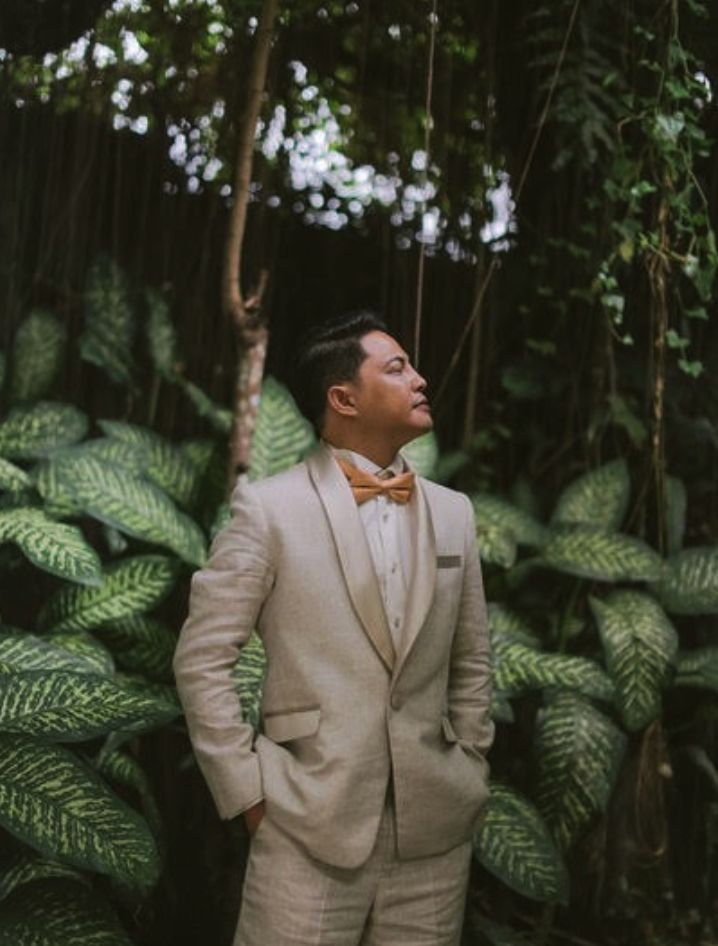
Philip keeps it classic in sun-washed Seychelles beige linen.

Mitch channels Persephone in a gown that blossoms with spring’s charm
Capiz became the couple’s destination of choice as an homage to the bride, who hails from the province. Historically, Capiz was the second Spanish settlement established in the Philippines. With its 80-kilometer coastline and a mesmerizing stretch of rivers and swamplands, the province offered a natural allure to the wedding party. Yet for the groom, it was more than scenery—it was about honoring his bride’s heritage and heart.
Their love story spans continents, email inboxes, and a few overpacked pieces of luggage. Phillip recalls their serendipitous encounter involving jumpsuits, hot air balloons, and the rhythm of a life lived in sync.

The Sacred Heart Shrine in Capiz, transformed into a lush tropical dreamscape.
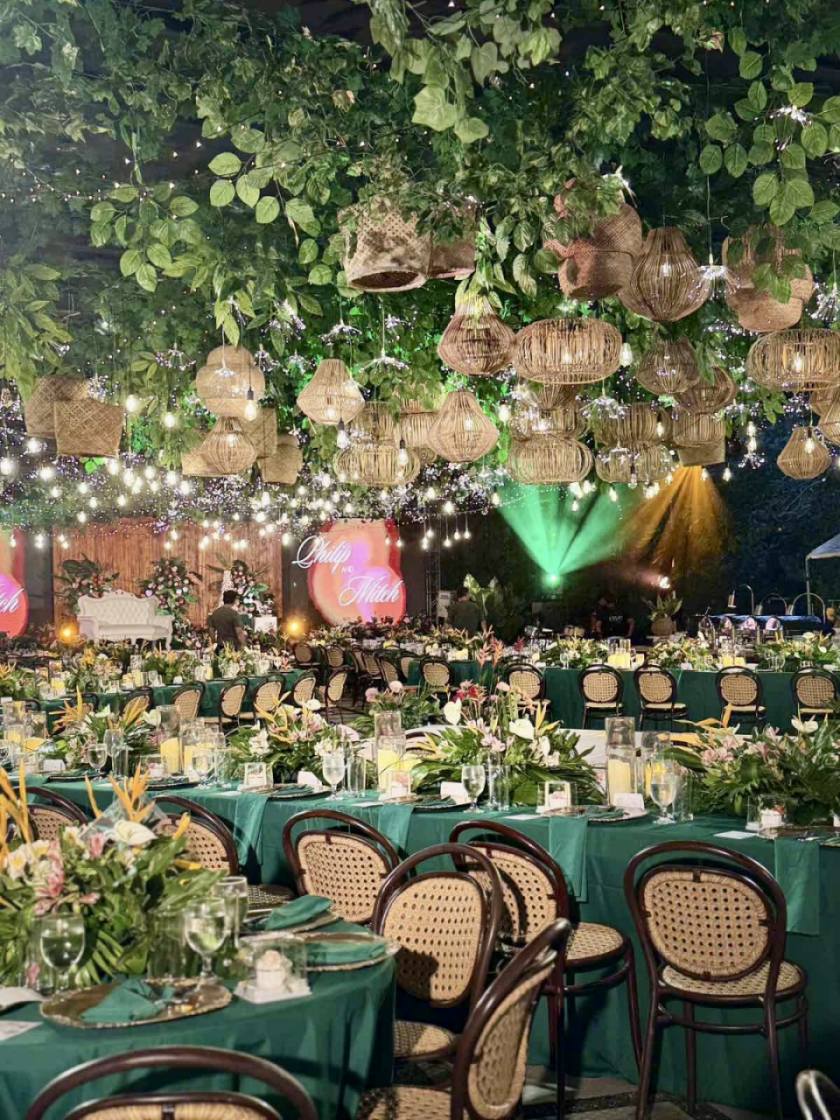
Wicker baskets, solihiya chairs, and cascading greens brought understated elegance to the naturalistic reception at Istorya Forest Garden.
How did you meet Mitch?
Right after covering a friend’s wedding. I spotted her navigating the space with this quiet confidence. We didn’t even speak—just exchanged a look. Later came a few messages, a first date, and her walking toward me in a black jumpsuit. That moment? Unforgettable. I thought, “Ka-Vogue!”
When did you know she was the one?
Honestly, from the start. I had just closed a big chapter of my life—career goals, family responsibilities—and when I held her hand for the first time, I didn’t want to let go. Everything just aligned.
You proposed in Turkey—why there?
Cappadocia. Picture it: fairy chimneys, floating hot air balloons, and this surreal landscape. It felt like a dream, and in that dream, I asked her to marry me.
Who plans your trips—beach bum or mountain guy?
I map out the adventures, and Mitch plans what we wear on them. She packs only what fits and flatters—and trust me, she always looks like she stepped out of a fashion editorial. Our luggage deserves its own Instagram.
If you had 10,000 lives, would you marry her each time?
Every single time. Even if we met in another galaxy.
What’s one quirky thing you love about her?
She’s endlessly resourceful. Whether it’s an outfit or a life goal, Mitch can pull it together like no one else. She’s sharp, creative, and once she sets her mind on something, there’s no stopping her.
What’s your message to Mitch as you set off on this next big adventure together?
Hi, Love—keep holding my hand. No matter how the winds blow, let’s keep making memories, telling stories, and seeing the world—together.

A Sky Full of Balloons, a Heart Full of Yes — Philip Proposes to Mitch in Magical Cappadocia
People
The Cardinals–an Amazing Gallery of Portraits on Cardinals in the Philippines by Artist Jun Impas

by Jing Ramos
With the recent death of Pope Francis on April 21, the Catholic Church is now focused on the election of the new Pontiff. The succeeding Pope will be challenged with continuing Pope Francis’ appointments and reforms, which leaned heavily on social justice and environmental issues.
According to the Code of Canon Law, the two most important functions of a Cardinal are to advise the Pope on matters of Church governance and global issues, and most importantly, to assume a vital role in electing a new Pope when the Holy See (Sede Vacante) is vacant.
In 6th-century Rome, the first individuals known as Cardinals were the deacons of the seven regions of the city. Since then, Cardinals have become a privileged group among the Roman clergy. It wasn’t until the 11th century that Cardinals were officially granted the right to elect a Pope. They were given the honor of wearing a red hat, which soon became their symbol. Often referred to as “Princes of the Church,” Cardinals wear distinctive red attire and are addressed as “Eminence,” a title that conveys dignity and respect.
Currently, one of the most favored contenders to continue Pope Francis’ progressive agenda is Cardinal Luis Tagle. He brings significant experience as the Pro-Prefect for the Section of the First Dicastery. Also serving as President of the Interdicasterial Commission for Consecrated Religious, Cardinal Tagle is the Grand Chancellor of the Pontifical Urbaniana University. Beyond his titles, he is widely known in the Vatican as a trusted figure within Pope Francis’ core group.

Cardinal Luis Tagle and artist Jun Impas
Jun Impas, a highly respected Cebuano visual artist known for his realistic paintings, shares his gallery of Filipino Cardinals. The artist’s accurate and detailed depictions capture not only the physical likeness but also the presence of his subjects. “As a realistic painter, my works revolve around human figures, religion, significant cultural events, and quintessential Filipino scenes. I believe in the beauty of the ordinary, and that the most touching and telling of any story is better felt when captured in infinite duration, as in a realism painting,” the artist concludes.
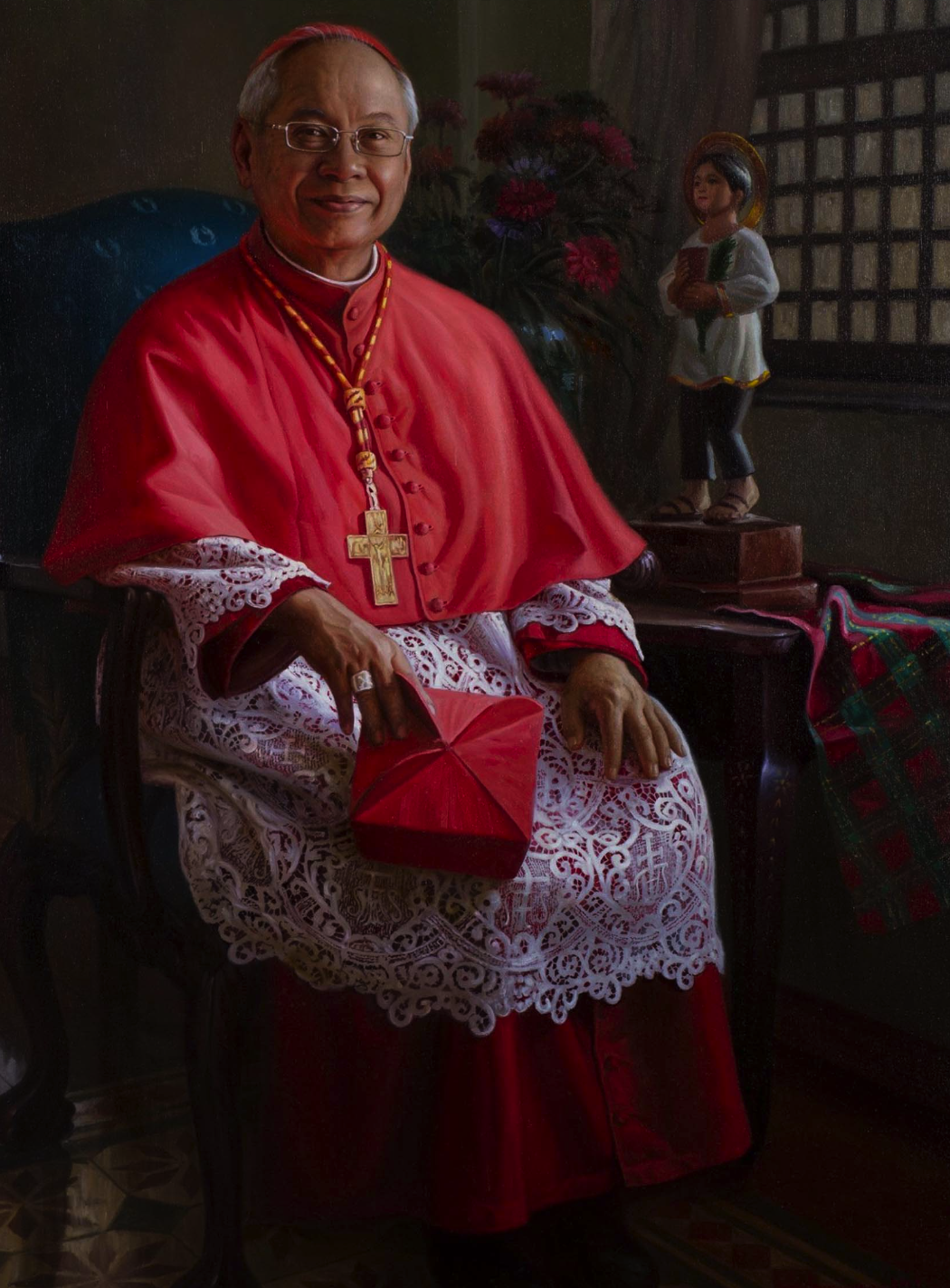
Cardinal Orlando Quevedo
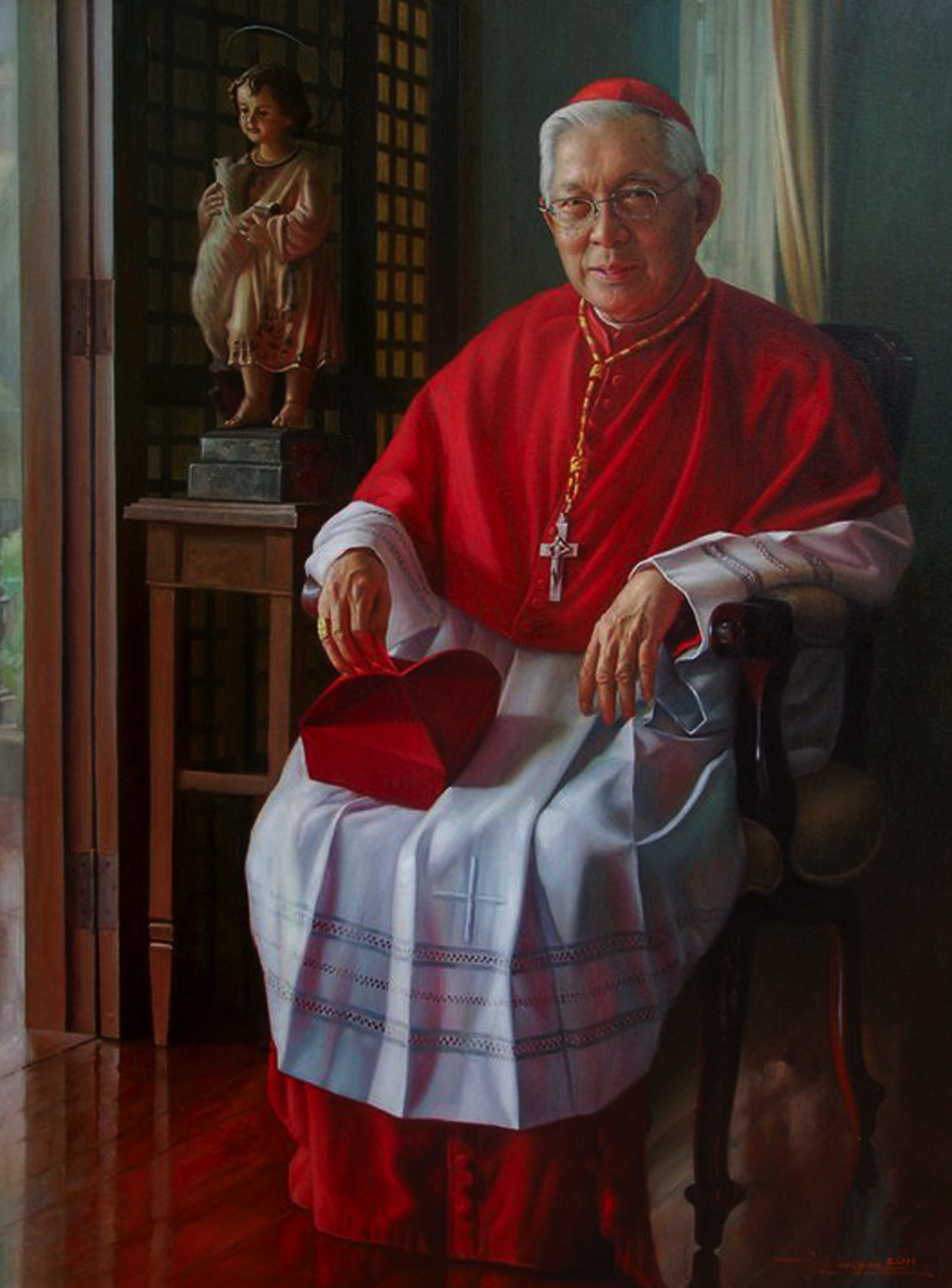
Cardinal Archbishop Emeritus of Manila Gaudencio Borbon Cardinal Rosales
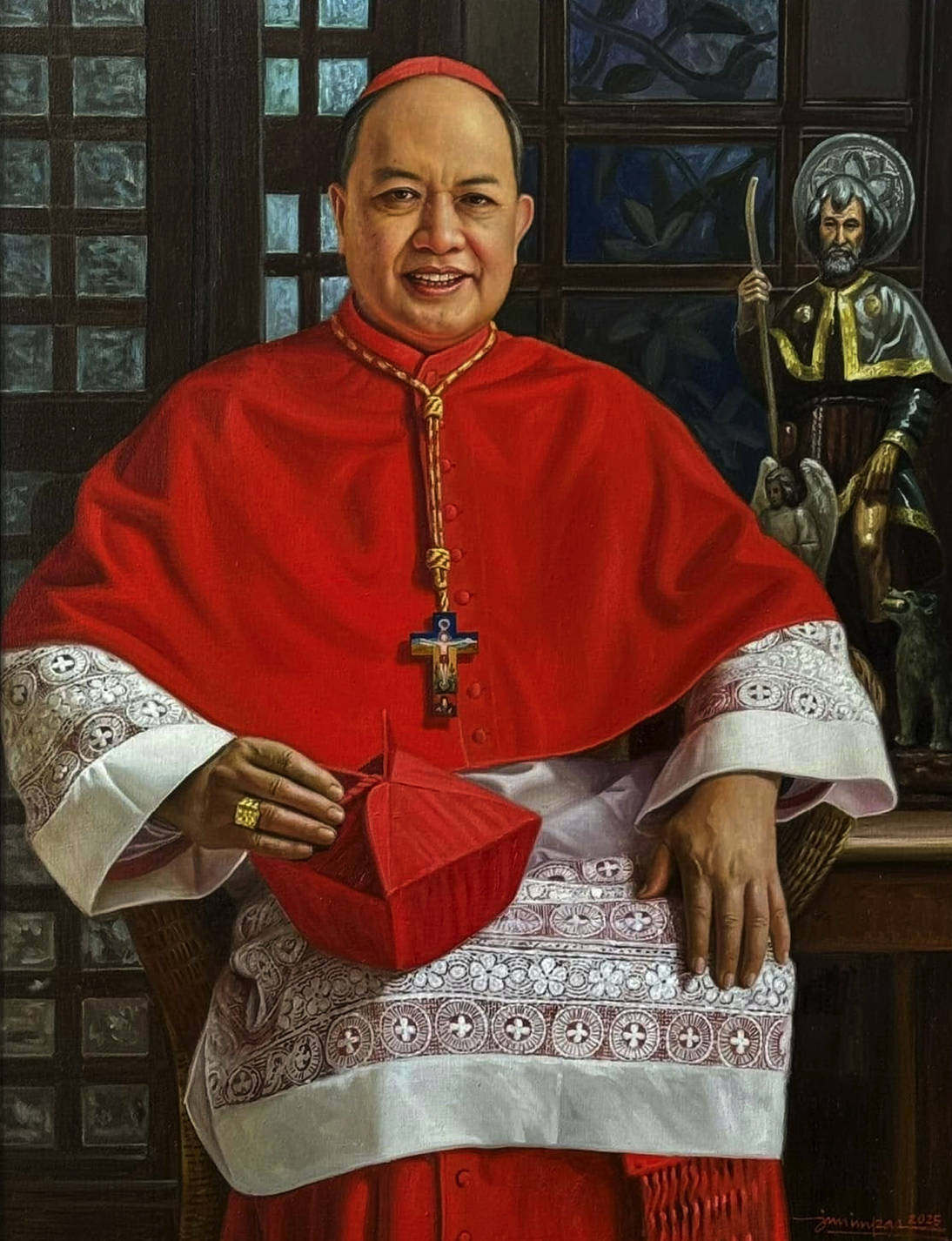
His Eminence Pablo Virgilio David, Cardinal Bishop of Caloocan
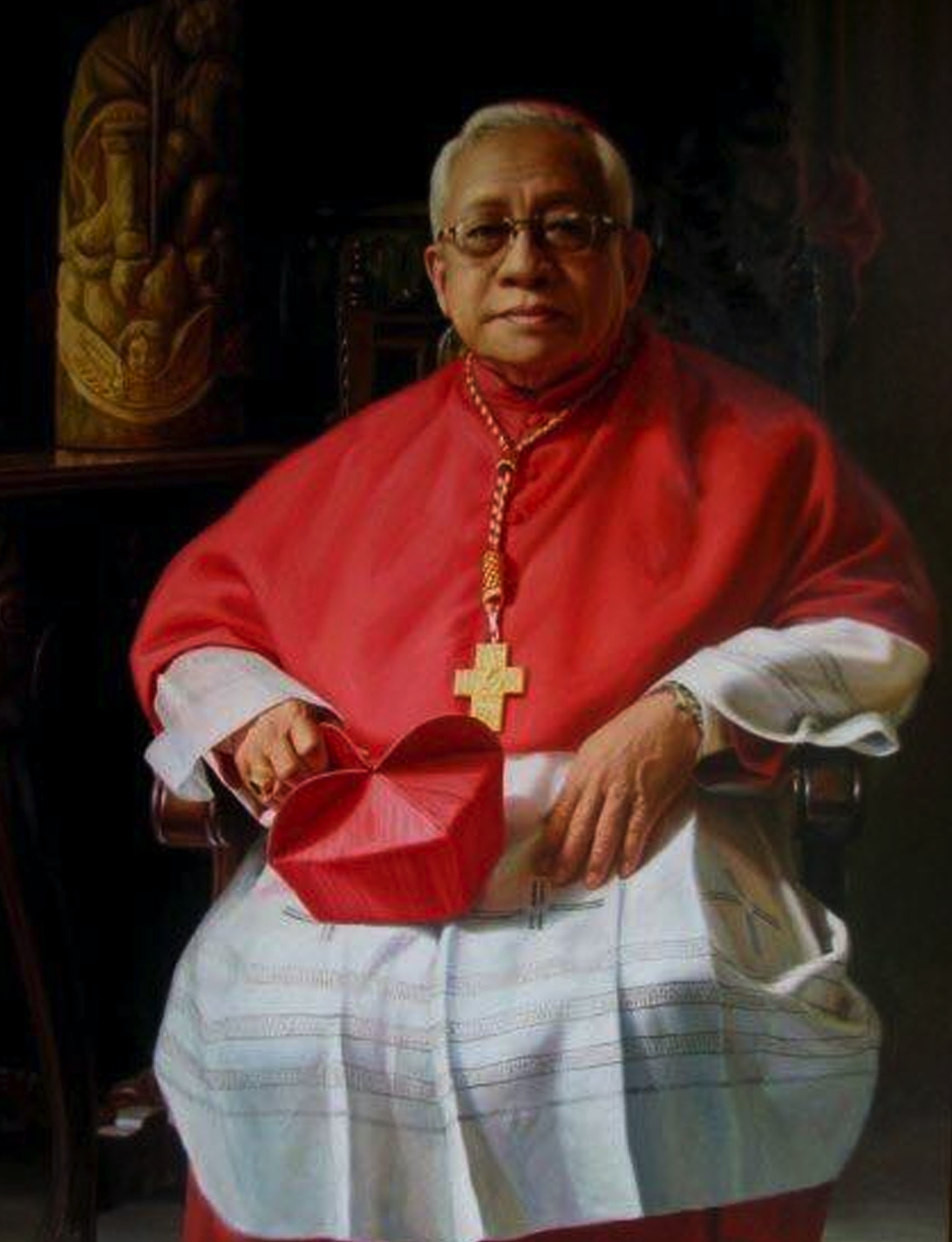
His Eminence Ricardo J. Vidal, Cardinal Archbishop of Cebu
Events
The First NUSTAR BALL

The NUSTAR Ballroom, a magnificent venue at the NUSTAR Resort and Casino in Cebu, sets the stage for last night’s first-ever NUSTAR Ball.

Black was the color of night at the Zee table.
Glamorous guests from Manila and Cebu converged at the NUSTAR Ballroom, an exquisite venue within the NUSTAR Resort and Casino in Cebu. The evening unfolded with a seated 5-course dinner. The opulent feast started with Beetroot Salmon Gravlax, adorned with caper berries, caviar, set with delicate edible flowers; and a main course of Compressed Pork Belly with Crackling Skin and Baby Scallops. Another highlight was the auction of coveted items like Dior and YSL handbags, a limited-edition Bulgari watch, and an exclusive 2-night stay in Nustar’s opulent 3-bedroom villa—complete with a private pool and a dedicated butler. The charity evening benefited the Cameleon Association, an NGO based in Iloilo City created in 1997 that developed a global approach to act on the causes and effects of sexual violence against children.

Nora Sol, Beth Go, Frances Siao and Marylou Ong

Ina Ronquillo, Maryanne Aboitiz and Jackie Lotzof

Designers Jun Escario and Philip Rodriguez

Philip Rodriguez with NUSTAR Malls two power ladies: May Adolfo and Joanna Salazar

Lana Osmeña with Mariquita Yeung

PJ Castillo and Kaye Abad with Cary Santiago

Drew Sarmiento with LV Manager Adrian Decuigan

Cary Santiago with Eva Gullas

Manila socialites Julie Boschi and Ching Cruz with June Alegrado
It was a night of elegance, luxury, and unforgettable memories as ladies in long gowns and gentlemen in black ties danced the night away.
-

 People2 months ago
People2 months agoThe Cardinals–an Amazing Gallery of Portraits on Cardinals in the Philippines by Artist Jun Impas
-

 QuickFx1 month ago
QuickFx1 month agoHill Station Baguio-Mitos Benitez-Yñiguez Raises the Bar with a Gastronomic Experience in a Cultural Heritage Building
-

 Style2 months ago
Style2 months agoFilippo Summer/Spring 2025 Menswear Collection-Fashion Designer Phillip Rodriguez Stays on Top of the Game
-

 People6 days ago
People6 days agoA Destination Wedding in Capiz; A Love Story in Focus
-

 Beauty & Wellness3 months ago
Beauty & Wellness3 months agoThe Lowdown on IV Drips–Dr. Victoria Jordan Sarmiento Opens Krowne Premiere Medical Aesthetics to Promote Overall Well-being
-

 QuickFx2 months ago
QuickFx2 months agoArt Beat–Maris Holopainen returns to the Original Qube Gallery Crossroads with a Smash Hit in Unscattered Voices
-

 Prime Target3 months ago
Prime Target3 months agoJamie Gellor–A Multihyphenate at the Intersection of Business, Beauty, and Wellness
-

 Events2 months ago
Events2 months agoSome Enchanted Evening–Marguerite Lhuillier hosts a Despidida Dinner for Eva Gullas in her Fabulous Post-Modernist Maria Luisa Mansion








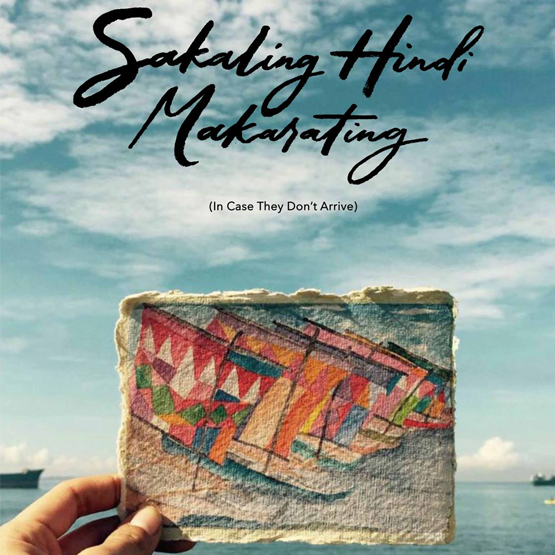





You must be logged in to post a comment Login